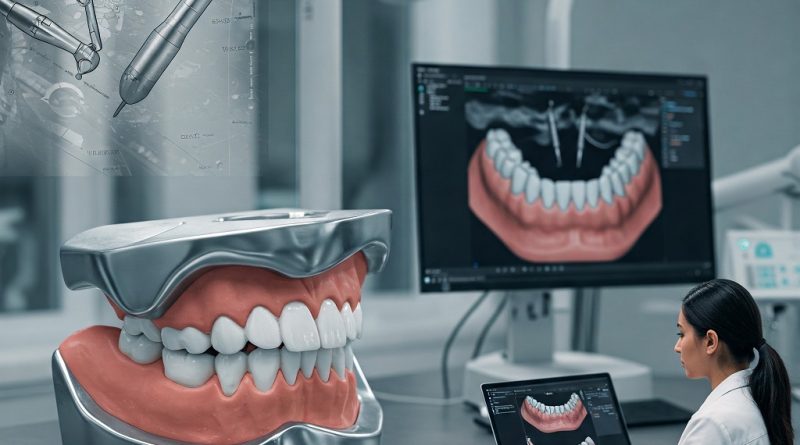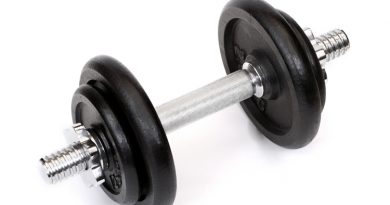Advancements in Dental Technology: A Guide to Modern Innovations
Key Takeaways
- Discover the transformative technologies shaping modern dentistry
- Understand the benefits and implications of cutting-edge dental innovations
- Learn how these advancements improve patient experience and outcomes
- Gain insights from reliable sources on the future of dental care
Introduction to Dental Innovations
The landscape of dentistry is evolving rapidly, driven by remarkable technological advancements. These changes are revolutionizing how dental professionals deliver care, creating more precise and significantly more comfortable patient experiences. Innovations like 3D printed dental crowns demonstrate technology’s potential to enhance oral healthcare profoundly. With these developments, dentistry is no longer about mere treatment but rather a holistic approach to patient wellness and satisfaction. The impact on patients and practitioners cannot be overstated as this momentum continues.
In this post, we shall examine many technical innovations influencing contemporary dentistry. From digital impressions to artificial intelligence, each section delves into the specifics of these innovations, offering insights into how they benefit patients and professionals alike. Anyone hoping to stay updated with the always-changing dental care industry must have a solid understanding of these technologies.
Digital Impressions: A Precise Approach
Digital impression technology has fundamentally transformed how dentists capture the intricate arch of a patient’s oral cavity. Traditional impression methods relied on physical molds made from alginate or silicone, which were often messy, uncomfortable, and susceptible to various inaccuracies due to factors like dislodgement or distortion during the setting process. In contrast, digital impressions leverage advanced optical and laser scanning technology to produce a highly detailed and accurate three-dimensional digital model of the teeth and surrounding gums.
This technological shift enhances the precision of the impressions and significantly streamlines the entire dental workflow, from the initial diagnosis to the final fitting of crowns, bridges, or orthodontic devices. The digital scanning process is quick, typically taking only a few minutes. The dentist captures thousands of data points during it, resulting in a complete and precise representation of the patient’s oral structure.
Patients experience numerous benefits from this innovation, including reduced chair time, as the entire process can be completed in a fraction of the time required for traditional methods. The absence of the cumbersome and often uncomfortable physical impression trays also leads to a far more pleasant experience. The digital files generated can be quickly and securely transmitted to dental laboratories or other specialists, facilitating seamless communication and collaboration. This effectiveness ensures that dental practitioners may make well-informed decisions based on precise and thorough data, which speeds up treatment timeframes and improves overall patient care.
3D Printing: Revolutionizing Prosthetics
3D printing in dentistry has revolutionized the production of these essential parts and marked a significant advancement in the manufacture of dental prostheses. This innovative technology enables the production of precise dental models and tailored solutions for crowns, bridges, and dentures, dramatically reducing the fabrication time from several weeks to days or even hours.
3D printing provides unparalleled customization, allowing dental professionals to create prosthetics that fit each patient’s unique anatomy. Using advanced materials and sophisticated software, dentists can design dental restorations that ensure a perfect anatomical fit and enhance patient comfort and functionality. This enhanced customization is crucial for adequate chewing, speaking, and oral health, helping maintain aesthetic and functional dental care.
Moreover, patients benefit from significantly shorter waiting times, which increases satisfaction and streamlines the treatment process. Dentists, on the other hand, can leverage 3D printing to guarantee superior fit and comfort. This technology’s precision minimizes the risk of common errors associated with traditional impression techniques and lab work.
In addition to improving efficiency, 3D printing enhances reliability in the fabrication process. Digital scans and computer-aided design (CAD) reduce human error, ensuring each prosthetic is crafted to specifications. As a result, the overall quality of dental care is elevated, with improved outcomes for patients seeking restoration and replacement options.
This unprecedented precision and efficiency are redefining industry standards and patient expectations in dentistry, paving the way for further innovations and advancements in oral health technology. The integration of 3D printing is not just a trend; it represents a new standard of excellence in dental practices that prioritizes patient care and clinical efficacy.
Laser Dentistry: Less Pain, Faster Recovery
Laser technology has revolutionized dental procedures, significantly enhancing patient comfort and reducing the discomfort commonly associated with traditional methods. Unlike conventional techniques that often involve drills and sharp instruments, laser dentistry employs focused light beams to target affected areas precisely. This makes it suitable for various treatments, including soft tissue surgeries, cavity detection and treatment, and teeth whitening.
One of laser dentistry’s main advantages is that it is minimally intrusive. For soft tissue operations like frenum removal or gum contouring, lasers may effectively remove or shape tissue with less bleeding and a decreased risk of infection. Lasers promote the coagulation of blood vessels during the procedure, resulting in less swelling and a significantly quicker healing time for patients than standard surgical methods.
Laser dentistry provides a gentler alternative for those who experience anxiety during dental visits. The precision with which lasers operate allows dentists to perform treatments with remarkable control and accuracy, often eliminating the need for anesthesia in many cases. It is particularly appealing to patients who may be apprehensive about needles or the sounds associated with traditional dental tools.
As laser technology becomes increasingly accessible and affordable, it is poised to become a standard practice in dental offices around the globe. As a result of continued developments in this area, we may anticipate a revolutionary change in dental treatment that prioritizes comfort, effectiveness, and general patient pleasure, making dental appointments more enjoyable for everyone.
Teledentistry: Expanding Access to Care
Teledentistry is transforming the field by enabling people to get dental treatment anywhere in the world. By harnessing advanced digital platforms, patients can consult with licensed dental professionals remotely, allowing for initial assessments, diagnoses, and even the development of tailored treatment plans—without physical office visits. This invention is incredibly revolutionary for people living in underserved or rural areas, where access to specialist dental treatment may be severely restricted or impossible.
This technology effectively bridges significant gaps in dental healthcare delivery, ensuring that patients receive consistent and continuous care, even during periods when in-person consultations may not be practical—such as during a public health crisis or for those with mobility challenges. The ability to conduct regular check-ups and seek consultations remotely fosters a proactive approach to dental health. It is necessary for the early detection and prevention of more serious oral health issues, which can significantly affect overall health. This procedure is made easier by improved communication methods like video conferencing and instant messaging, which enable patients and dental professionals to communicate in real-time. Consequently, teledentistry improves access to dental services and enhances patient engagement and education, empowering individuals to take charge of their oral health.
AI and Machine Learning: Enhancing Diagnostics
In dentistry, machine learning and artificial intelligence (AI) revolutionize diagnostic procedures, resulting in more accurate assessments and individualized predicted treatment. Advanced AI algorithms can analyze vast and complex datasets, including electronic health records, dental images such as radiographs and 3D scans, and historical treatment outcomes. These technologies significantly enhance diagnostic accuracy by identifying intricate patterns and correlations that might elude the human eye, allowing dentists to develop more personalized and effective treatment plans.
As AI technologies evolve, the potential applications in dental care seem boundless. For example, by examining imaging data for minute irregularities that could point to malignant alterations, AI systems can now help in the early identification of mouth cancer. Furthermore, proactive treatments that address both the predictive and preventative aspects of dental care are made possible by predictive analytics, which may determine a person’s risk of acquiring common dental problems like cavities or gum disease. AI-driven insights pave the way for a more efficient and informed approach to oral health management.
Impact and Future of Dental Tech
Integrating advanced technologies within dental care is far more than a fleeting trend; it signifies a transformative shift in how oral health is perceived, managed, and delivered to patients. Innovations such as 3D imaging, CAD/CAM systems, and teledentistry are revolutionizing how dental professionals approach treatment. These technologies are not merely aimed at increasing the speed and efficiency of procedures; they significantly enhance the overall patient experience. For instance, 3D imaging allows for detailed visualizations of a patient’s oral structures, leading to more accurate diagnoses and treatment plans. Moreover, laser dentistry reduces discomfort and recovery time, ultimately ensuring patient satisfaction and improved health outcomes.
As we look to the future, the trajectory of dental technology promises even more incredible advancements. Continued research and investment in areas such as artificial intelligence and robotics are likely to yield solutions that are not only more capable but also more accessible, addressing a broad spectrum of dental challenges—from complex surgeries to routine care like cleanings and exams. This development portends a bright future for oral health practitioners, who can better offer individualized care while raising the standard of care for their patients. Ultimately, this paradigm shift is shaping dental care into a field as intriguing as it is essential, fostering a healthier society where oral health is prioritized and accessible to all.




